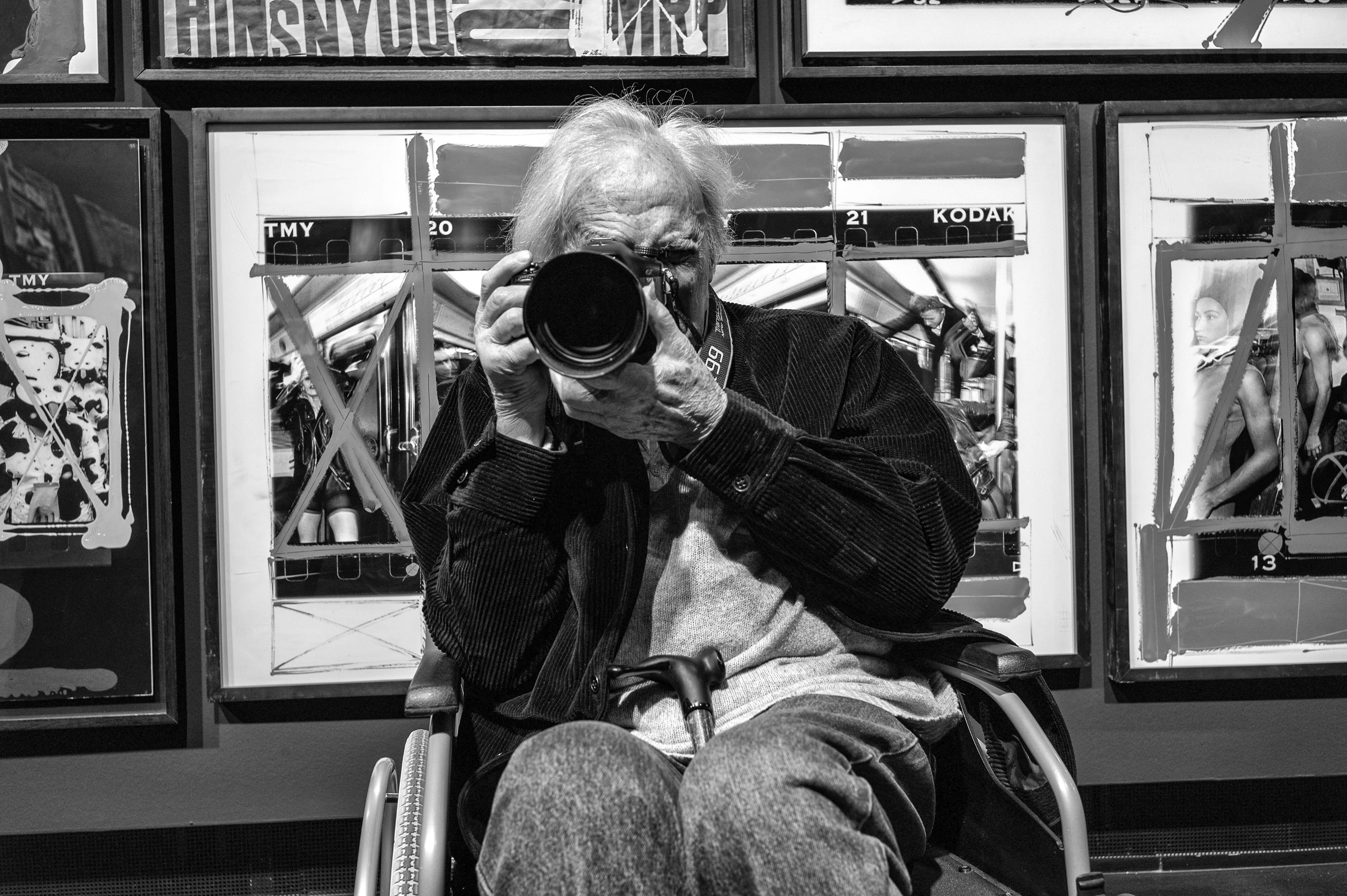The late William Klein; a visionary
[30.09.2022]
Fashion photographer, painter, graphic designer, abstract photographer, writer, director, bookmaker: few have transformed as many areas of art and culture as William KLEIN. His particular graphic dynamism and his deep affection for the struggles of humanity always dominated the chaos of modern life… and with an energy that was constant, if not growing, for over half a century.
“No image maker has fed on the energy and chance of the urban scene with the same appetite as William Klein”, David Campany, On Photographs
A photographer beyond clichés
William Klein – an ‘outsider’ of photography who invented a radical language that influenced generations of artists – has died aged 96 in Paris.
Born in New York in 1926, the young American discovered Europe during his military service and settled in France after meeting model and artist Jeanne Florin, with whom he shared his life until her death in 2005.
Initially a painter (a pupil of Fernand Léger) he was recognized in the 1950s when he moved from abstract painting to photography thanks to his meeting with Alexander Liberman, artistic director of Vogue US. Klein shook up the codes of street photography, but also of fashion, by being one of the first to bring models out of their studios. Black and white, exacerbated contrasts and deliberately blurred images: the grain was strong and assumed. He made extensive use of the wide angle and the telephoto lens, drastically distinguishing himself from his contemporaries Helmut Newton, Irving Penn and Richard Avedon.
Klein’s work gave birth to one of the most striking and legendary photo books in history, a veritable snub to photo reporting and even to classic photography: Life is Good & Good for You in New York. Trance Witness Revels dedicated to his hometown. He ignored all the codes of his time condensing fuzzy, unframed images that gave free rein to his disgust with triumphant consumerism. Klein integrated into his images the typographies of advertisements and signs that suggest the beginnings of Pop Art. Long decried in his native country, it took almost 30 years for his work to be acknowledged there; but it was immediately and widely welcomed in Europe. Winner of the Nadar Prize in 1957, he summed up his approach to photography as “No rules, no prohibitions, no limits”.
With Klein, the photographer is no longer a witness but an actor in the image. In direct contact with the situations whose movement and energy he captured. He later created three other books focusing on the streets of major world capitals (Rome, Moscow, Tokyo).
“I’ve always hated misty, drapery effects and ridiculous staging. Nor was I ever convinced by sentimental, humanist, nostalgic and clean photography, which dominated in the early 1950s.” W.K. in Le Monde (2002)
From photography to cinema…
After creating still images, he started working in cinema. His films bear witness to his political commitment and even cost him his contract with Vogue. He directed a number of advertising films and also tries his hand at documentaries with Muhammad Ali the Greatest (1964), reflecting his commitment to minorities. He subsequently directed the short film Broadway by Light and his famous film Who are you, Polly Maggoo? (1966), a scathing satire on the world of fashion. Twenty years later, he applied the same critical approach to In and Out of Fashion and signed the cover of an album by Serge Gainsbourg, where the singer appears in drag, with a cigarette in his hand.
“Painted contacts”
His return to photography was somewhat indirect via spectacular exhibitions of huge format images that overlapped and responded to each other. In his desire to perpetually revisit his work, Klein was at the origin of the graphic bridge between photography and painting which he called “painted contacts”. These famous negatives, which he covers with large strokes of acrylic paint, imitate the gesture of the photographer who selects the right image. His desire was to elucidate the genesis of a photograph, the modest ‘behind-the-scenes of images’, as for example in his famous photo Gun I, New York, which captures a young boy, armed with a plastic gun aimed at the photographer, sometimes angry, sometimes laughing. It was this same approach that led him to initiate the “Contacts” series in 1989 for the Arte TV channel, a collection of 13-minute films in which photographers are invited to comment on their work and to bring us into their creative processes.
Klein’s market
William Klein died just after a retrospective exhibition of his work at the International Center of Photography in New York. Represented in France by the Polka gallery and Le Réverbère, he was the subject of a major exhibition in 2005 at the Pompidou Center in Paris, which he himself orchestrated. The prices of his works rocketed after that show and his best-ever auction result was hammered the following year at Christie’s NY for Smoke and Veil, Paris, a signed gelatin bromide print that fetched $144,000. In 2012, London’s Tate Gallery created a dialogue between its photos and those of the no less radical Japanese photographer Daido MORIYAMA. Mostly collected in the United States and the UK, his photos sell for several thousand dollars on average. Based on the annual auction turnover generated by his work, Klein is currently enjoying his 2nd best global ranking since 2007.




 0
0
